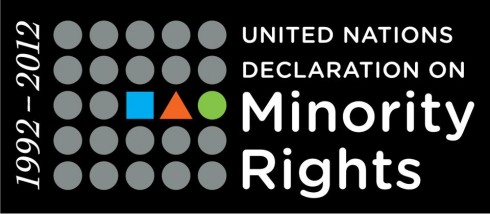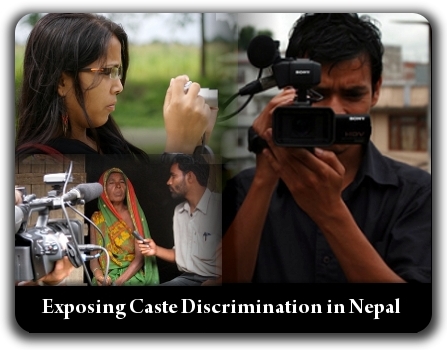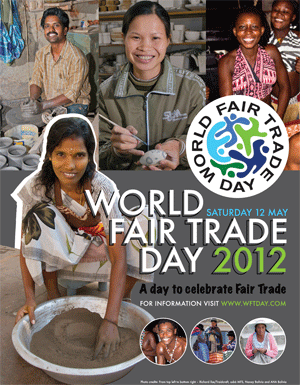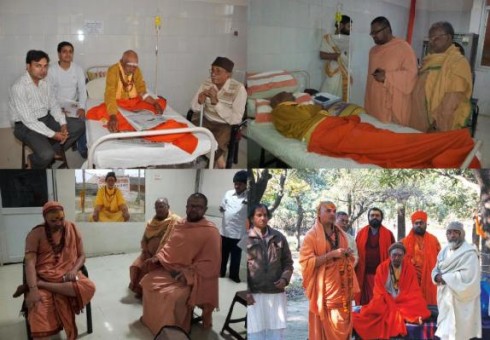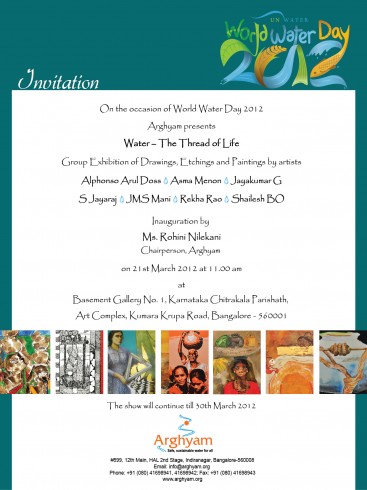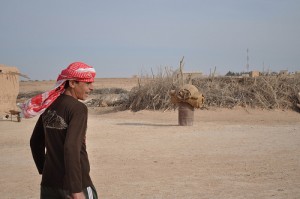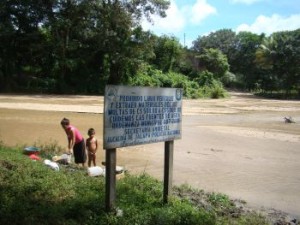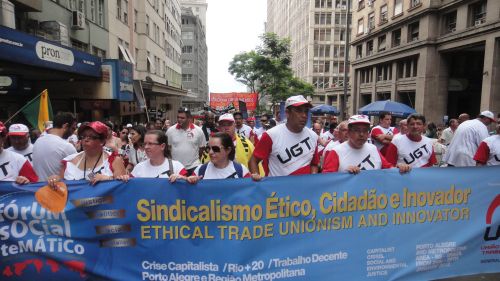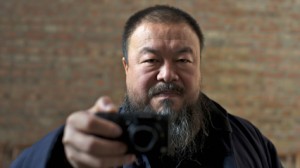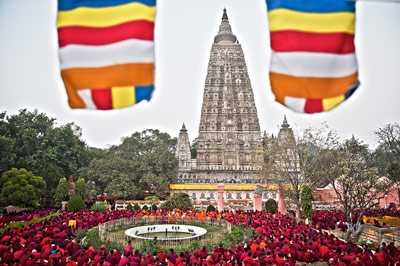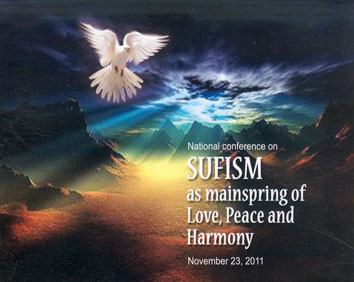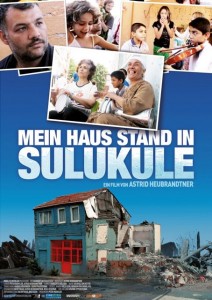SOCIAL PROJECTS
The Minority Rights Declaration at 20
Violations of the rights of national, ethnic, religious and linguistic minorities or related tensions were at the core of 55 per cent of violent conflicts between 2007 and 2009, according to a survey. More:http://bit.ly/IyunUN
________________
Use and share the visual designs created especially for the 20th anniversary of the Minority Rights Declaration: http://bit.ly/I4fpc5
Minorities face attack as revolutions sour in Middle East and North Africa, says new global Peoples Under Threat survey
Syria, Libya, Egypt and Yemen are among the most significant risers in this year’s internationally acclaimed global ranking Peoples Under Threat, which lists countries where communities are most at threat of mass killing, MRG says.
According to authoritative indicators factored into the Peoples Under Threat analysis, states in the Middle East and North Africa have risen notably in the table, with minorities at particular risk. As political space opens up, ethnic or sectarian grievances have been exacerbated and minorities scapegoated.
Read the global press release and the Africa press release.
Listen to an interview with MRG Executive Director Mark Lattimer on the 2012 Peoples under Threat rankings.

ADVOCACY PROJECT – Dalit Journalism in Nepal
http://www.advocacynet.org/page/home
http://www.hrw.org/asia/nepal
United Nations Human Rights
READ THE STORY OF 27 YEARS OLD PRAKASH MOHARA
Dalit is a designation for a group of people traditionally regarded as „untouchable„. Dalits are a mixed population, consisting of numerous castes from all over South Asia; they speak a variety of languages and practice a multitude of religions.
While the discrimination based on caste system (not the caste system itself) has been abolished under the Indian constitution, a New York University School of Law based group claimed in a 2007 shadow report to the United Nations that there still is discrimination and prejudice against Dalits in South Asia. Since India’s independence, significant steps have been taken to provide opportunities in jobs and education. Many social organisations too have proactively promoted better conditions for Dalits through improved education, health and employment. http://en.wikipedia.org/wiki/Dalit
Varna (Hinduism) Opposition within Hinduism
Critics point that the effect of communities (jatis) inheriting varna was to bind certain communities to sources of influence, power and economy while locking out others and thus create more affluence for jatis in higher classes and severe poverty for jatis in lower classes and the outcaste Dalit. In the last 150 years Indian movements arose to throw off the economic and political yoke of an inherited class system that emerged over time, and replace it with what they believed to be true Varnashrama dharma as described in the Vedas. *HERE
In 2008, Nepal completed an extraordinary journey from dictatorship to democracy. Nepal was declared a republic, bringing the autocratic rule of King Gyanendra to an end. Elections were held and the leader of the Maoist rebels, Prachanda, emerged as head of the government. It was an extraordinary achievement, led by civil society.
But the success is not yet complete. Caste has been officially abolished in Nepal, but it remains a fact of life particularly in villages. The result has been deep discrimination against Dalit, who used to be described as “untouchables.” Caste condemns Dalit to poverty, illiteracy and ill health.
These pages are intended to support a campaign by the Jagaran Media Center (JMC), a leading advocate for Dalit rights, to reduce caste discrimination.
JMC has exposed caste discrimination for two years through an e-bulletin, which now goes out to almost 10,000 subscribers. At the suggestion of its partners, JMC has decided to expand and deepen this coverage, starting in 2009. Every three months, Dalit journalists throughout Nepal will collect information from their district and submit it to the JMC office in Kathmandu, for editing and dissemination. Each thematic e-bulletin will investigate and expose a practice which results in caste discrimination.
The information will be posted on the JMC website; broadcast on JMC’s radio station (Radio Jagaran) from Butwal in Nepal; sent out to subscribers of the JMC e-bulletin; distributed by diaspora listservs in Europe and North America; and re-distributed by The Advocacy Project (AP) in Washington.
JMC and its partners will then use the information to launch a series of actions and campaigns, in Nepal and internationally, to reduce and eliminate caste discrimination in a significant number of Nepal’s districts.
On these pages:
- The Goal: A caste-free society in Nepal
- Profiles of Discrimination: The first thematic bulletin exposes the threat to Inter-caste marriage
- The Reporters: 20 Dalit journalists are under contract to JMC. Six contributed to the first issue (January 2009)
- The Team: JMC and AP are developing the campaign in Nepal and the US
- Background: JMC and AP have cooperated to expose caste since 2004
- http://www.youtube.com/AdvProject
- Taking Action:How you can help!
Asia indigenous body calls for social justice
“The government has recently agreed to enlist Khas-Arya (including Chhetri, Brahmin, Thakuri, Dasnami and Dalit) under category of ‘indigenous (Aadivasi) against internationally accepted standards set out by ILO Convention 169 that Nepal has ratified,” the pact said in a statement.
“This agreement is clearly aimed at allowing certain groups to continue to dominate and muddle and diffuse the rightful entitlement of indigenous peoples to self-determination in the new constitution,” said Joan Carling, secretary general of the body. “We call for the withdrawal of this irrational agreement as it only serves to exacerbate the existing social and political conflicts.”
http://www.lahurnip.org/index.php
The pact has expressed solidarity with Nepal’s indigenous people in their demands for legal recognition of their distinct collective identities and cultures, right to self-determination under a federal setup of autonomous units, the right to their lands, territories and resources, the right to political participation and the requirement for their free, prior and informed consent on matters that concerns them – those are in line with the international human rights obligations of Nepal under ILO Convention 169 and UN Declaration of the Rights of Indigenous Peoples (UNDRIP).
Following protracted protests from indigenous groups, the government yesterday signed an agreement with indigenous representatives to present their demands, mostly similar to those in the petition, in the CA. “We call on all political parties and CA members to adhere to the demands of indigenous peoples and marginalised groups so as to ensure inclusive democracy in the new constitution,” added Carling.
Further, in light of reports of many incidents of excesses by police forces during peaceful protests of indigenous peoples, particularly in the south-western Nepal, that left tens of Tharus injured, the pact has urged police to exercise restraint and respect rights of citizens to peaceful assembly.
It has expressed regret that media agencies have never given due prominence to balanced reporting of organised actions and other public programmes of Nepal’s indigenous peoples. “We respect freedom of media and rights of journalists but it is also important for media agencies to reflect diversity in their reporting and give attention to the issues and actions of marginalized groups,” said Carling.
The pact has requested international media agencies to independently monitor and report on the developments in Nepal so as to facilitate the much-needed global attention to the struggles of these groups long deprived of social justice.
Source : THT
http://globalvoicesonline.org/world/south-asia/nepal
Previous #articles #videos #indigenous issues #humanrights
World Fair Trade Day 2012 Declaration
World Fair Trade Day 2012 Declaration
Happy World Fair Trade Day! #WorldFairTradeDay We congratulate the Fair Trade Movement for bringing Fair Trade to many homes, businesses, policy makers, and to all of us who believe in just, sustainable and Fair Trade.
Fair trade is an organized social movement and market-based approach that aims to help producers in developing countries to make better trading conditions and promote sustainability. The movement advocates the payment of a higher price to exporters as well as higher social and environmental standards. http://en.wikipedia.org/wiki/Fair_trade
Fair Trade will be celebrated on 12 May 2012, World Fair Trade Day, in diverse places and cultures across the globe. The World Fair Trade Day is an annual initiative of the World Fair Trade Organization (WFTO). Hundreds of events are organized in more than 70 countries in Africa, Asia, Europe, Latin America, North America and Pacific Rim. Leading the celebration are members of the WFTO that have pioneered Fair Trade for more than five decades, supported by country and regional networks.
World Fair Trade Day is a worldwide festival of events celebrating Fair Trade as a tangible contribution to the fight against poverty, climate change and the economic crisis that has the greatest impact on the world’s most vulnerable populations. A third of the world’s population lives on less than two dollars a day. The global crisis confirms the need for a fair and sustainable economy locally and globally. Trade must benefit the most vulnerable and deliver sustainable livelihoods by developing opportunities for small and disadvantaged producers. Millions of producers and traders, business and policy makers, supporting organizations and volunteers have contributed to the substantial growth of Fair Trade.
Fair Trade makes a difference. Fair Trade Organizations are pioneers and change makers.
http://www.wfto.com
http://www.wftomarket.com
http://www.wfto-europe.org
http://www.wfto-asia.com
http://www.ifat-la.org
http://www.cofta.org
http://www.facebook.com/WFTOFairTrade
Previous #articles #videos #fairtrade
SOLUTIONS Prosperity Without Growth by Tim Jackson
An international conference held in Montreal, Canada, from May 13-19, 2012
Degrowth (in French: décroissance,[1] in Spanish: decrecimiento, in Italian: decrescita) is a political, economic, and social movement based on environmentalist, anti-consumerist and anti-capitalist ideas. Degrowth thinkers and activists advocate for the downscaling of production and consumption—the contraction of economies—as overconsumption lies at the root of long term environmental issues and social inequalities. Key to the concept of degrowth is that reducing consumption does not require individual martyring and a decrease in well-being. http://en.wikipedia.org/wiki/Degrowth
Twenty years after the Earth Summit in Rio, the linkage of sustainable development to economic growth requires profound rethinking. It has not offered a convincing solution to one of the most dramatic crises in history: how to avert ecological collapse while enhancing social justice and improving life’s prospects. In advance of Rio plus 20, our Conference seeks to challenge and move beyond the sustainable development agenda. A degrowth perspective will help us visualize and build towards a truly prosperous world.
Drawing from previous degrowth conferences in Paris and Barcelona in 2008 and 2010 respectively, the Montreal conference will focus on the particular situations and dynamics of the Americas. What does degrowth mean for our Hemisphere with its rich geographical, cultural, social and economic diversity? How can degrowth models apply to different contexts from the Arctic to Tierra del Fuego? What does degrowth mean for the indigenous peoples of the Americas and their aspirations for their lands and peoples? How can degrowth concepts be made audible, understandable and aceptable to rich North Americans?
This gathering will bring together academics, activists, environmentalists and indigenous peoples to discuss our needs and hopes for diverse and more equitable societies in the Americas, on a post-growth healing earth.
In summary, degrowth is a call for a radical break from traditional growth-based models of society, no matter if these models are „left“ or „right“, to invent new ways of living together in a true democracy, respectful of the values of equality and freedom, based on sharing and cooperation, and with sufficiently moderate consumption so as to be sustainable.
http://www.facebook.com/Degrowth-in-the-Americas
http://www.facebook.com/DegrowthPedia
http://www.facebook.com/boellstiftung
http://www.facebook.com/postgrowth
http://www.campaigncc.org/greenjobs
http://www.facebook.com/PostCarbon
http://www.greengrowth.org/rethink.asp
http://www.facebook.com/slowfoodinternational
http://www.stwr.org/india-china-asia/putting-growth-in-its-place.html
http://www.ecobuddhism.org/prosperity_without_growth
http://www.facebook.com/WECANADA
http://www.scidev.net/science-and-innovation-policy/science-at-rio-20


Public Talk in Ottawa, Canada on April 28: His Holiness will give a public talk on Ethics for a Whole World organized by the Canada Tibet Committee at the Civic Center. Contact Website: www.tibet.ca/2012
Buy the Book
Beyond Religion: Ethics for a Whole World by His Holiness the Dalai Lama
Ten years ago, in his book Ethics for a New Millennium, His Holiness the Dalai Lama first proposed an approach to ethics based on universal rather than religious principles. Now, in Beyond Religion, the Dalai Lama, at his most compassionate and outspoken, elaborates and deepens his vision for a nonreligious way that transcends mere religion.
I Won’t Fall Down: A Video Tribute
A video tribute to the courage and compassion of the Tibetan people, their struggle against Chinese oppression and the trials of their life as a people in exile from their beloved homeland. Montreal band Sunrise and Good People, visited the little town of McLeod Ganj in India, home to many Tibetan refugees. Moved by the stories they heard, they created this musical tribute.
The Tibetan Resettlement Project

Arunachal Pradesh /ˌɑrəˌnɑːtʃəl prəˈdɛʃ/ is a state of India. Located in northeast India, Arunachal Pradesh borders the states of Assam and Nagaland to the south, and shares international borders with Bhutan in the west, Burma in the east and the People’s Republic of China in the north.
Arunachal Pradesh means „land of the dawn-lit mountains“[4]. It is also known as „land of the rising sun“[5] („pradesh“ means „state“, „territory“ or „region“) in reference to its position as the easternmost state of India. Like other parts of Northeast India, a majority of the people native to the state are of Tibeto-Burman origin.A large and increasing number of migrants have reached Arunachal Pradesh from many other parts of India, although no reliable population count of the migrant population has been conducted, and percentage estimates of total population accordingly vary widely. Part of the famous Ledo Burma Road, which was a lifeline to China during World War II, passes through the eastern part of the state.
The northern border of Arunachal Pradesh follows the McMahon Line, a border delineated in the Simla Accord that was signed by the United Kingdom and Tibet in 1914 but not by China. Both the Republic of China (ROC) and the People’s Republic of China (PRC) claim the northern portion of Arunachal Pradesh as part of the former provinces of Tibet Area and Xikang (for the ROC), respectively the Tibet Autonomous Region (for the PRC). The PRC often refers to the claimed areas as South Tibet. Itanagar is the capital of the state. http://en.wikipedia.org/wiki/Arunachal_Pradesh
The Government of Canada is helping up to 1,000 Tibetans immigrate to Canada. Even with India’s incredible generosity, without this humanitarian initiative many of these Tibetans – currently sheltering in the Indian state of Arunachal Pradesh – may never be able to pursue what so many in Canada take for granted: the very best for themselves and their children. Learn about the Tibetan Resettlement Project and the struggles of a people in exile.
The Government of Canada is facilitating the immigration of up to 1,000 Tibetans living in the state of Arunachal Pradesh in India, at the request of the Canada Tibet Committee and Canada’s Tibetan community. Up to 1,000 displaced Tibetans, including principal applicants and their eligible family members, will be accepted over a five-year period.
As part of this program, the Canada Tibet Committee has incorporated Project Tibet Society (PTS) to oversee the program. With CTC branches, local Tibetan Cultural Associations and Tibet supporters across Canada, PTS is now in the process of establishing local committees to oversee the five-year program.
Arunachal Pradesh
Arunachal Pradesh is situated in North-Eastern India. With a total area of 83,743 sq. kms, it has a long international border with Tibet (currently occupied by the People’s Republic of China) to the north and north-east (1,080 km), Myanmar to the east (440 km) and Bhutan to the west (160 km).
The majority of Arunachal Pradesh is claimed by the People’s Republic of China and to this day faces threats from insurgent groups.
Conditions of Tibetans in Arunachal Pradesh today
In Tibetan settlements across Arunachal Pradesh there’s already a young child who – with the right opportunities – may be a future doctor, a classical pianist, a scholar or the leader of a new environmental organization.
Yet, even with India’s incredible generosity, the reality for thousands of Tibetans who live in Arunachal Pradesh is that they may never have the chance to realize their potential and to experience what so many in Canada take for granted: the very best for themselves and their children.
Just the inaccessibility of the settlements alone means that providing for the education of children close to home is impossible. Aid supports hundreds of children in their education, but they must attend boarding schools many days journey from their families, with visits home every 3 to 5 years at most. The cost of education is family separation.
Public policy
The Minister established the following temporary public policy under section 25.2 of the Immigration and Refugee Protection Act (IRPA):
Up to 1,000 displaced Tibetans, including principal applicants and their eligible family members, may be accepted under this public policy. Principal applicants and their eligible family members, whether they accompany the principal applicant or not, will be counted towards this total.
As of March 17, 2011, applications for permanent residence made under the IRPA by persons who are displaced Tibetans living in the state of Arunachal Pradesh in India who have been matched with an approved sponsor in Canada shall be assessed along with their family members by delegated officers to determine whether permanent residence status in Canada could be granted to them on the basis of the criteria that are set out below.
To read more: www.cic.gc.ca/english/department/laws-policy/tibet.asp
Criteria
To qualify for this program a displaced Tibetan must be living in the state of Arunachal Pradesh in India who:
- can demonstrate their identity as a displaced Tibetan;
- has resided in Arunachal Pradesh prior to, and continues to reside in Arunachal Pradesh since December 18, 2010;
- has been matched with an approved sponsor in Canada through the Project Tibet Society, the umbrella organization working with Citizenship and Immigration Canada (CIC) on the implementation of this program;
- are not inadmissible on grounds of security, criminality, war crimes and crimes against humanity, organized crime, health and misrepresentation; and
- can demonstrate their ability to successfully establish in Canada.
Groups of Five
A Group of Five is any group of five – or more – Canadians (18 years or older) who live in the community where the Tibetan family will settle. Members will ensure that the necessary support will be provided for the 12 months of the sponsorship. The group will need to show that they have the resources, expertise and commitment to fulfil the sponsorship.
Sponsors are responsible for providing care, lodging, settlement assistance and support for the duration of the sponsorship period. Normally, this is 12 months starting from the day of arrival in Canada or until the family has become self-sufficient, whichever comes first.
Sponsors will be responsible for helping access language training, look for a job, and extend ongoing friendships. They will provide encouragement and help to adjust to life in Canada; teaching the rights and responsibilities of permanent residence in Canada.
With the Refugee Sponsorship Training Program (a Toronto-based organization), Project Tibet Society will ensure that the required training is provided to support this exciting initiative. In addition to this training, Project Tibet Society will help guide Groups of Five through all the necessary steps required and be their to counsel groups during the 12 month period.
Group of Five applications are available here:
- http://www.cic.gc.ca/english/information/applications/tibetan.asp
- http://www.cic.gc.ca/francais/information/demandes/tibetain.asp
Settlement organizations who would like to sponsor Tibetans under the program:
What to do next?
We can help the families of Arunachal Pradesh achieve their dream by extending a hand as they start new lives in Canada.
This program is their chance to realize these dreams for themselves and us.
Now we need your help.
To learn how you can help or to donate contact Project Tibet Society at:
P.O. Box 217, Place du Parc 2 Station, Montreal QC, H2X 4A4
Tel: 514.487.0665 | Email: ctcoffice@tibet.ca
Web: tibet.ca/projecttibetsociety
http://www.cic.gc.ca/english/information/applications/tibetan2.asp
Previous articles #dalai lama #tibet #humanrights

„Hands of Care and Hope“ can make their way out of the slums and take responsibility for their own own lives
http://www.bruckmeier.info/html/aktuell_t.html
AUSSTIEGS-SZENARIO: NEW HOPE THEATER
Spielend aus der Armut
A slum, as defined by the United Nations agency UN-HABITAT, is a run-down area of a city characterized by substandard housing and squalor and lacking in tenure security. According to the United Nations, the percentage of urban dwellers living in slums decreased from 47 percent to 37 percent in the developing world between 1990 and 2005.[1] However, due to rising population, and the rise especially in urban populations, the number of slum dwellers is rising. One billion people worldwide live in slums[2] and the figure will likely grow to 2 billion by 2030.[3]
The term has traditionally referred to housing areas that were once relatively affluent but which deteriorated as the original dwellers moved on to newer and better parts of the city, but has come to include the vast informal settlements found in cities in the developing world.[4]
Der Österreichische Regisseur Stephan Bruckmeier arbeitet seit drei Jahren in Kenias Hauptstadt Nairobi mit Jugendlichen in den Slums. Das Ergebnis seiner „kulturellen Entwicklungshilfe“ zeigt er erstmals auf einer Österreich-Tournee. http://en.wikipedia.org/wiki/Slum
The Dream Of Getting A Job (c) Heike Schiller
Afrika – das bedeutet für die meisten entweder Abenteuer-Safari-Urlaub, tropischer Sandstrand oder schlechte Nachrichten aus dem Fernsehen. Eine bunte Theaterrevue, die Afrika einmal anders präsentieren soll – der Titel: „The dream of getting a job“ – „Der Traum, einen Job zu bekommen“. Der Regisseur hat das Stück gemeinsam mit den Burschen und Mädchen der Gruppe geschrieben, es erzählt von den Problemen, die junge Menschen in Kenia haben, wenn sie heiraten und selbstständig werden wollen – besonders dann, wenn sie aus sehr armen Verhältnissen kommen.
Das Ensemble (c) Heike Schiller
Das „Hope Theatre“ – wie sich die Gruppe nennt – ist eines von mehreren Projekten in den Slums von Nairobi, die versuchen, eine Zivilgesellschaft der Slumbewohner aufzubauen und so die Lebensbedingungen aus sich heraus zu verbessern. Bruckmeier arbeitet dabei unter anderem eng mit der Organisation „Hands of Care and Hope“ zusammen. Diese wiederum wird von der Caritas Kärnten unterstützt und der Südtiroler Ordensschwester Lydia Pardeller geleitet. Mehr als 1000 Kinder aus den Slums bekommen dort Schulunterricht – und eine warme Mahlzeit am Tag.
Der kultur.montag von den Proben in Nairobi über ein Afrika jenseits aller Klischee-Vorstellungen.
http://tv.orf.at/groups/kultur/pool/new_hope TV-Beitrag: Gerhard Roßka
Termine:
25. – 26. April 2012:
Carinthische Musikakademie(CMA), Ossiach
28. April 2012:
Kaisersaal in St. Johann i.T.
1. – 5. Mai 2012:
Theater an der Gumpendorferstraße(TAG), Wien
7. – 8. Mai 2012:
Orpheum Graz
Weiterführendes zum Thema:
INFO: „Hands of Care and Hope“
Projekt Nairobi-Kariobangi, Kenya
Aktuelles März 2012 http://www.hopeforfuture.at/a_maerz2012.htm Dandora Dumping Site – Eine Müllhalde inmitten der Stadt und einer der giftigsten Orte der Welt. The Worlds Most Polluted Places: http://www.blacksmithinstitute.org/wwpp2007/finalReport2007.pdf
Toxic waste is waste material that can cause death, injury or birth defects to living creatures [1]. It spreads quite easily and can contaminate lakes and rivers and atmosphere. The term is often used interchangeably with “hazardous waste”, or discarded material that can pose a long-term risk to health or environment.
Hazardous wastes are poisonous byproducts of manufacturing, farming, city septic systems, construction, automotive garages, laboratories, hospitals, and other industries. The waste may be liquid, solid, or sludge and contain chemicals, heavy metals, radiation, dangerous pathogens, or other toxins. Even households generate hazardous waste from items such as batteries, used computer equipment, and leftover paints or pesticides..[2] http://en.wikipedia.org/wiki/Toxic_waste
Peter Quendler (Caritasverband Kärnten) und Otto Hirsch beabsichtigen, auf ein schon bestehendes gefördertes Projekt in Nairobi aufzubauen und die Franziskanerschwester Lydia Pardeller in ihrem Kampf gegen Hunger und Not zu unterstützen.
In einem der größten Slums von Nairobi, Kariobangi, hat Peter Quendler in der Missions-schwester Lydia Pardeller eine Partnerin gefunden, die sich unermüdlich um ca. 1000 eltern- und chancenlose Kinder sorgt, damit sie kostenfrei und mit täglicher Verpflegung die Schule besuchen und abschließen können. Wenn die Kinder zur Schule gehen, können und müssen sie nicht nach Essbarem auf dem Müll suchen und betteln. Schwester Lydia hat es sich zum Ziel gesetzt, Straßen- und Waisenkinder heranzubilden, damit sie fähig sind, ein menschenwürdiges Leben zu führen und in die Gemeinschaft integriert werden können. Eine Schul- bzw. Berufsausbildung sind die Voraussetzungen für den Ausstieg aus dem Elend.
„Hands of Care and Hope“ (HCH) ist eine Organisation, die im Jahre 2006 von Schwester Lydia Pardeller gegründet wurde. Mit bewundernswerter Kraft erfüllt sie mit diesem Projekt eine außergewöhnliche Mission:
• Aufbau von 4 Grundschulen für Straßen- und Waisenkinder
• 1000 Kinder und Jugendliche werden unterrichtet, täglich mit einer warmen Mahlzeit versorgt und durch eine Sozialarbeiterin betreut
• Aufbau von Wohn- und Wasserprojekten
• Gründung eines Jugendzentrums – Einrichtung und Organisation einer Berufsausbildung – Zukunftschance für derzeit 37 Jugendliche
• Betrieb einer Armenküche – Ausspeisung für alte Menschen und Unterstützung Kranker und Alleingelassener in den Slums
• Eröffnung eines Selbsthilfezentrums für an AIDS erkrankte Frauen
Um nun eine wirtschaftliche Grundlage zur Weiterführung der Projekte und die Finanzierung der Ausbildung dieser Kinder zu sichern, wird als erstes der Aufbau einer Bäckerei im Oktober 2011 begonnen, ab Jänner 2012 soll die duale Bäckerausbildung starten.
Die Fa. Backaldrin wird dankenswerterweise die Einrichtung der Bäckerei unterstützen. Geplant sind zwei Backstuben, eine für die Ausbildung, die zweite für die Verkaufs-produktion. Es werden vorerst etwa 10 Kinder eine Lehre beginnen, für die zwei Ausbildner zuständig sind. Diese beiden Ausbildner werden von österreichischen Bäckern trainiert.
In weiterer Folge sind die Lehrberufe Bauarbeiter, Kunststofftechniker sowie Haus- und Solartechniker geplant. Damit werden rasch und nachhaltig Arbeitsplätze für diese Jugendlichen aus Schwester Lydias Obhut geschaffen.
Parallel zum Aufbau der Lehrberufe wird mit der Aufstockung der bestehenden St. Clare´s Primary School begonnen, um dort eine Secondary School einrichten zu können. Dadurch wird den Schülern die Möglichkeit geboten, nach Abschluss dieser Secondary School eine Universität zu besuchen.
Das Ziel dieses Projektes ist es, möglichst vielen Kindern durch eine gute Ausbildung „the way out of the slums“ zu ermöglichen, damit sie Zukunftsperspektiven haben, sich am Arbeitsmarkt integrieren können und Verantwortung für ihr eigenes Leben übernehmen.
http://allafrica.com/kenya
http://www.hrw.org/africa/kenya
http://tv.orf.at/groups/kultur/pool/new_hope
http://globalvoicesonline.org/-/world/sub-saharan-africa/kenya
http://www.ohchr.org/EN/Issues/Development/Pages/DevelopmentIndex.aspx
http://www.ohchr.org/EN/Issues/Environment/ToxicWastes/Pages/SRToxicWastesIndex.aspx
http://www.ohchr.org/EN/NewsEvents/Pages/IntlYearPeopleAfricanDescent.aspx
http://en.wikipedia.org/wiki/Right_to_housing The right to housing is the economic, social and cultural right to adequate housing and shelter. It is recognised in the Universal Declaration of Human Rights and International Covenant on Economic, Social and Cultural Rights.
#video http://www.amnesty.org/en/economic-social-and-cultural-rights
http://www.facebook.com/ICESR Center for Economic and Social Rights
http://www.facebook.com/SocialWatch
Previous related #articles #videos:
Jabulani – a self help project in Mariannhill
San Damiano Foundation & Village to Village
MALC, Ruth Pfau – Flood Relief Pakistan
The Human Right to Water – World Water Day 2012
http://www.internationalrivers.org
http://www.unwater.org/worldwaterday
http://www.sankatmochanfoundationonline.org/save_ganga.html
News(23.03.2012): NEW DELHI: Environmentalist GD Agarwal, 80, who is on a fast-unto-death since January 15 to save the Ganga river, on Friday agreed to end his fast after the government agreed to his demands, his supporters said. „He will …See more
On the occasion of World Water Day 2012 the Sankat Mochan Foundation (SMF), an organisation working for the cause of Ganga for about three decades, is going to launch a new online campaign -STOP the Sewage: Clean Ganga NOW.
World Water Day has been observed on 22 March since 1993 when the United Nations General Assembly declared 22 March as World Day for Water.[1]
This day was first formally proposed in Agenda 21 of the 1992 United Nations Conference on Environment and Development (UNCED) in Rio de Janeiro, Brazil. Observance began in 1993 and has grown significantly ever since; for the general public to show support, it is encouraged for the public to not use their taps throughout the whole day, the day has become a popular Facebook trend.
The Ganges , is a trans-boundary river of India and Bangladesh. The 2,525 km (1,569 mi) river rises in the western Himalayas in the Indian state of Uttarakhand, and flows south and east through the Gangetic Plain of North India into Bangladesh, where it empties into the Bay of Bengal. By discharge it ranks among the world’s top 20 rivers.
Water – The Thread of Life, a group exhibition of Contemporary Artists, Arghyam, March 21-30, 2012, Karnataka Chitrakala Parishath, Bangalore http://www.indiawaterportal.org/event/24761
Welcome to MC Mehta Environmental Foundation
Current Projects The Plight of the Ganga
M. C. Mehta, “In the Public Interest”
We believe that if, all of us unite and take proper care in protection and conservation of the limited natural resources, we can give our children a better tomorrow. It is possible only through community participation and awareness.
MCMEF has been actively involved in creating awareness among NGO’s,Lawyers,Scientists,Senior Officials, Academicians,Students & Youth through training and capacity building programmes, seminars,workshops,declamation contests and other grass roots level activities.
This ancient and magnificent river is now under serious threat due to the construction of hydroelectric dams along the upper reaches of the Ganga. This will devastate local ecology, wildlife and communities by tunneling in river-flow, effectively drying up the Ganga in these areas.
Further downstream, the Ganga is already suffering from the effects of extensive deforestation, and continues to be used as a dumping ground for untreated industrial and domestic waste. Religious tourism has also led to the proliferation of polythene waste in her waters.
As a result of climate change, the Gangotri glacier is rapidly receding. This will have profound implications on India’s water and food security.
# video Anna Hazare on G D Agrwal’s condition Anna ji speaking on G.D. Agrwal’s condition. He will also be going to meet G.D.Agrwal later today. || अन्ना जी, जी.डी. अग्रवाल के स्वास्थ्य के बारे में बात करते हुए| वो आज शाम को उनसे मिलने भी जायेंगे|
http://www.savegangamovement.org
http://www.indiawaterportal.org
http://www.indiaenvironmentportal.org.in
http://chimalaya.org/2012/03/20/anxious-wait-for-scientists-on-rio20-talks
http://www.scidev.net/en/science-and-innovation-policy/science-at-rio-20
http://chimalaya.org/2011/06/23/bringing-back-himalayan-watermills-to-life
Previous related #article #videos Hindol Deb – Swar Ganga Music Foundation
http://en.wikipedia.org/wiki/Right_to_water as a human right under international law.
http://www.ohchr.org/EN/Issues/Development/Pages/DevelopmentIndex.aspx
http://en.wikipedia.org/wiki/Environmental_law
http://en.wikipedia.org/wiki/Environmental_impact_assessment
chinadialogue http://www.chinadialogue.net
The current surge in land acquisitions http://farmlandgrab.org by foreign countries and private companies could lead to regional tensions over water rights, warns a new report by the Stockholm International Water Institute published last week. ä��页 home > 每日星球 the daily planet Global land deals suck rivers dry Beth Walker
Another water battle looming Pakistan is gearing up for a new fight with India, reports Athar Parvaiz from Ladakh. At the centre of the latest row is a dam funded by international efforts to tackle global warming. http://www.chinadialogue.net/4825-Another-water-battle-looming
Fighting India’s mega-dams Popular protests against the construction of a vast network of dams in the Brahmaputra valley have gathered impressive momentum. Tanmoy Sharma reports from Assam. http://www.chinadialogue.net/ 4799-Fighting-India-s-mega-dams
River Interlinking India Most environmentalists around India heaved a sigh of relief on Friday when Pranab Mukherjee, the country’s Finance Minister, did not say a word about the plan to interlink India’s rivers, nor allocate any money for that purpose.
Live Webcast: Public Welcome Ceremony for Archbishop Desmond Tutu
http://www.tutu.org The Desmond Tutu Peace Centre
We are having technical problems with the broadcast, we apologize for any inconvenience. The video will be available on www.dalailama.com after the event.
There will be a live webcast of the public ceremony welcoming Archbishop Desmond Tutu on his visit to meet with His Holiness the Dalai Lama in Dharamsala, India, on February 10th at 10:30-11:30 am Indian Standard Time.
The ceremony will be available for viewing and download after the event on http://www.dalailama.com (Russian translation available at http://dalailama.ru/top/974-dalai-lama.html)
For times in your region, 10:30am February 10th in Dharamsala, India, is the same as 9:00 pm February 9th in Los Angeles, California, USA.
Desmond Mpilo Tutu (born 7 October 1931) is a South African activist and retired Anglican bishop who rose to worldwide fame during the 1980s as an opponent of apartheid. He was the first black South African Archbishop of Cape Town, South Africa and primate of the Church of the Province of Southern Africa (now the Anglican Church of Southern Africa).
Tutu has been active in the defence of human rights and uses his high profile to campaign for the oppressed. He has campaigned to fight AIDS, tuberculosis, homophobia, transphobia, poverty and racism. Tutu received the Nobel Peace Prize in 1984, the Albert Schweitzer Prize for Humanitarianism in 1986, the Pacem in Terris Award in 1987, the Sydney Peace Prize in 1999, the Gandhi Peace Prize in 2005 and the Presidential Medal of Freedom in 2009. Tutu has also compiled several books of his speeches and sayings.
http://en.wikipedia.org/Desmond_Tutu
http://www.nobelprize.org/nobel_prizes/peace/laureates/1984/tutu-lecture.html
Previous #articles #news #social issues #humanrights > desmond tutu

EU Pledges Strong Support for Earth Summit
Through coverage of issues like food security, extractive industries, biodiversity and climate change, IPS aims to give a voice to people whose stories are seldom heard. IPS also hopes to highlight the various challenges they face in this globalised world: health and food insecurity, environment degradation, and poverty.
Hello,
While I’m always passionate about the work I do here at IPS, there’s something else that I’m excited about: Support Your Media Day.
On February 15, 2012, thousands of people are going to put their support behind non-profit, independent media in an unprecedented, 24-hour virtual donation drive. And on that day, every donation and donor IPS gets will help us claim our share of more than $10,000 in grants.
These contributions will fund the critical work we do every day and our unique brand of international reporting. They’ll support our writers, photographers, editors and media trainers throughout the world — from the streets of Damascus to the Dadaab refugee camps, from the Amazon basin to the Mekong Delta — wherever citizens are acting for change.
Support Your Media Day is going to be a big event, and everyone will be talking about it. Please join us. This is your opportunity to sustain reporting and analysis that is especially critical in this time of global upheaval.
We need you to help us with these three things:
- 1) Mark Wednesday Feb. 15 on your calendar, bookmark this giving link #video http://www.razoo.com/story/ipsnews/ and make a donation to IPS on Support Your Media Day.
- 2) Share this event on Facebook and Twitter and help build the buzz. You can tweet about this day using #supportyrmedia.
- 3) Spread the word! Forward this email to your family and friends along with a personal note explaining why you believe in our work, and why they should give on Feb. 15.
Support your media. Support IPS. We can’t wait to celebrate the difference your generosity will make.
 Sincerely,
Sincerely,Mario Lubetkin
Director-General, IPS
Some stories in this selection were produced by Tierramérica, a specialised information service on environment and development created by IPS in Latin America and sponsored by UNEP, UNDP and the World Bank. This newsletter includes independent IPS news coverage financed by the Finnish Ministry of Foreign Affairs.
These newsletter includes news coverage which is part of a project funded by the European Union
The contents of this news coverage, including any funded by the European Union, are the sole responsibility of IPS and can in no way be taken to reflect the views of the European Union.
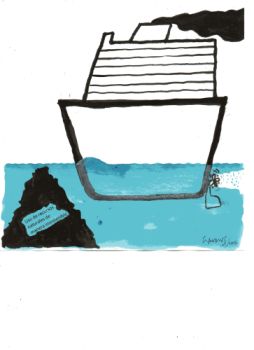
2012/2/2 From the Frontline of Environment
Through coverage of issues like food security, extractive industries, biodiversity and climate change, IPS aims to give a voice to people whose stories are seldom heard. IPS also hopes to highlight the various challenges they face in this globalised world: health and food insecurity, environment degradation, and poverty.
2011 – A Year of Weather Extremes, with More to Come
Analysis by Janet Larsen and Sara Rasmussen*
WASHINGTON, Feb 1 – The global average temperature in 2011 was 14.52 degrees Celsius (58.14 degrees Fahrenheit). According to NASA scientists, this was the ninth warmest year in 132 years of recordkeeping, despite the cooling influence of the La Niña atmospheric and oceanic circulation pattern and relatively low solar irradiance.
MORE >> http://ipsnews.net/news.106616
OP-ED: After Durban, Latin America Looks Towards Rio+20
Ede Ijjasz-Vásquez*
WASHINGTON, Jan 31 (Tierramérica) – After the climate change negotiations in Durban, South Africa in December, there is space to continue advancing in the short and medium term. Now the attention of Latin America and the rest of the world is turned towards the United Nations Conference on Sustainable Development taking place this June in Rio de Janeiro.
In Durban, delegates from 194 countries agreed to develop a new global climate pact by 2015, which would enter into force in 2020. MORE >> http://ipsnews.net/106606
Local residents continue to use water from the depleted Coco River, despite the signs prohibiting it.
http://en.wikipedia.org/Right_to_water This article is about a right to water as a human right under international law. For a discussion of water usage laws in common law, see Water right.
NICARAGUA-HONDURAS: Re-Greening the Border
José Adán Silva*
MANAGUA, Jan 31 (Tierramérica) – Ignacia Matute looks back nostalgically on the days when the hills around her home in northwestern Nicaragua were blanketed in green, and she woke every morning to the sounds of birds singing in the treetops and the rushing waters of the nearly Coco River.
MORE >> http://ipsnews.net/news.106604
 CUBA: Adapting to Climate Change Proves a Complex Challenge
CUBA: Adapting to Climate Change Proves a Complex Challenge
Patricia Grogg
SURGIDERO DE BATABANO, Jan 30 – No one who lives in this fishing village on the south coast, 70 km from the Cuban capital, can forget the devastation wrought by hurricanes in 2008.
Official estimates indicate that 2.32 percent of Cuban territory may be permanently under water by 2050. If the necessary adaptation measures are not taken, as many as 79 coastal settlements will be affected and 15 will completely disappear.
![]() People living in low-lying coastal areas are most exposed to sea-level change.
People living in low-lying coastal areas are most exposed to sea-level change.
![]() She hopes and believes the water won’t reach her new house.
She hopes and believes the water won’t reach her new house.
![]() In the wake of a hurricane in Surgidero de Batabanó.
In the wake of a hurricane in Surgidero de Batabanó.
![]() Risk evaluation is a first step towards a climate change adaptation plan. Credit: Jorge Luis Baños/IPS
Risk evaluation is a first step towards a climate change adaptation plan. Credit: Jorge Luis Baños/IPS
MORE >> http://ipsnews.net/106593
Labour and other activists flood the streets of Porto Alegre in environmental protest.
Thematic Social Forum Awash with Criticism for Green Economy
Clarinha Glock*
PORTO ALEGRE, Brazil, Jan 30 (Tierramérica) – Critical voices raised against what was dubbed „the gospel of green capitalism“ resonated in every discussion and street march held during the Thematic Social Forum, which brought thousands of activists to the capital city of the state of Rio Grande do Sul, in southern Brazil.
Spurred by the global economic and financial crisis, participants at this year’s thematic edition of the World Social Forum, which ran from Jan. 24th through the 29th, called on governments to implement changes in production and consumption, even as they were sceptical that a commitment along those lines could be secured at the United Nations Conference on Sustainable Development (Rio+20), scheduled for June in Rio de Janeiro.
Professor Edgardo Lander, of the Central University of Venezuela and a member of that country’s Social Forum, said there was „an attempt to rebuild capitalism with a new, green face.“
„Rio+20 comes at a time when capitalism faces a profound crisis and when the severe problems arising from the limitations of growth and the destruction of the conditions that make life on the planet possible are more evident,“ he told Tierramérica.
In this context, „green capitalism“ offers a solution to the severe crisis, primarily of the financial sector, through the increasing commodification of everything from education and healthcare to the traditional knowledge of indigenous peoples, he said.
MORE >> http://ipsnews.net/news.106591
U.N. Panel Launches Blueprint for Sustainable Development
Thalif Deen
UNITED NATIONS, Jan 30 – A long-awaited report by a U.N. high-level panel on global sustainability recommends several far-reaching proposals, including the establishment of new institutions and the creation of global indicators, aimed at protecting the world’s environment and strengthening the U.N.’s sustainable development strategy.
MORE >> http://ipsnews.net/news.106590
THEMATIC SOCIAL FORUM: Working Towards a Never-Ending Democracy
Antonio Martins
PORTO ALEGRE, Jan 27 – For five centuries, Europe has taken it upon itself to enlighten the world, teaching it ways to address and overcome crises, from ideas and wars to missionary work and genocides.
MORE >> http://ipsnews.net/news.106576
Some stories in this selection were produced by Tierramérica, a specialised information service on environment and development created by IPS in Latin America and sponsored by UNEP, UNDP and the World Bank. This newsletter includes independent IPS news coverage financed by the Finnish Ministry of Foreign Affairs.
These newsletter includes news coverage which is part of a project funded by the European Union
The contents of this news coverage, including any funded by the European Union, are the sole responsibility of IPS and can in no way be taken to reflect the views of the European Union.
Read more IPS reporting of environment news at: http://www.ipsnews.net/environment.asp
http://www.stwr.org/imf-world-bank-trade
http://www.facebook.com/UN Department-of-Economic-and-Social-Affairs DESA
http://www.amnesty.org/en/economic-social-and-cultural-rights
http://www.facebook.com/ipsenvironment
http://twitter.com/ipsenvironment
http://www.facebook.com/road2rio20
http://www.scidev.net/en/science-and-innovation-policy/science-at-rio-20
Rio+20: Is science getting a say? There’s quite a bit about science in the first draft of the Rio+20 negotiations http://www.facebook.com/scidevnet http://twitter.com/scidevnet

FOOD: WTO „must address“ food security
UPDATE 30.01.2012 Haircut Negotiations – Hedge Funds Bet on Profits from Greek Debt Talks SPIEGEL ONLINE – http://www.spiegel.de/international/topic/debt_crisis
The negotiations over the Greek debt haircut are becoming increasingly suspenseful, with euro-zone finance ministers and the IMF pushing investors to accept greater losses. Hedge funds, more than any others, stand to profit, and are betting that the voluntary debt rescheduling will fail. By Stefan Kaiser http://www.facebook.com/spiegelinternational
Coming Events:
7 February 2012: European Economic and Social Committee sustainability conference
Olivier De Schutter will address Workshop 1, entitled „food, water and energy for everyone“, held between 4.30 and 6.00 pm, of the Conference of the European Economic and Social Committee (EESC) Go sustainable, be responsible! European civil society on the road to Rio+20.
30 January 2012: No enough food, energy for World as population increases: U.N. report | Morocco World News http://moroccoworldnews.com
30 January 2012: With new blueprint in hand, Ban calls for action to chart more sustainable future http://www.un.org/apps/news/sustainable development
http://www.irinnews.org/Report WTO
http://www.ourworldisnotforsale.org/
“ Trade and food security is in effect a WTO issue, and so there is great frustration within the UN that this enormously restricts the role of, for example, the Food and Agriculture Organization-based Committee on Food Security „
Olivier de Schutter, UN Human Rights Council’s Special Rapporteur on the Right to Food, says: “Food security is the elephant in the room, which WTO [the World Trade Organization] must address”, pointing out that food import bills had soared by a third for poor countries this year.
WTO defending an outdated vision of food security [16 December 2011] Geneva – „Globalization creates big winners and big losers. But where food systems are concerned, losing out means sinking into poverty and hunger. A vision of food security that deepens the divide between food-surplus and food-deficit regions, between exporters and importers, and between winners and losers, simply cannot be accepted.
Food security hostage to trade in WTO negotiations: UN right to food expert [16 November 2011] Geneva – „The world is in the midst of a food crisis which requires a rapid policy response. But the World Trade Organisation (WTO) agenda has failed to adapt, and developing countries are rightly concerned that their hands will be tied by trade rules.”
Is the Doha round delivering on poverty?
Food aid on the back burner as WTO talks collapse
Some issues WTO needs to address in agriculture:
Ceilings on subsidies: Current ceilings on how much the US and the EU can spend on subsidies that distort trade are still rather high
Cotton subsidies: The US has still not fully complied with a WTO ruling in 2009 to remove subsidies for its cotton producers. African farmers could have gained from a 3.5 percent average increase in world cotton prices, if the US had cut subsidies.
Biofuel Subsidies : Not covered yet. A new study found that US ethanol subsidies may have artificially inflated maize prices by as much as 17 percent in 2011. Source: ICTSD
Some Further Sources such as http://www.un.org/en/documents/udhr/index.shtml
Read http://www.srfood.org/ Press release, „Eco-Farming Can Double Food Production in 10 Years, says UN Report“, 8 March 2011.
FARMAfrica FARM-Africa http://www.farmafrica.org.uk
Research by American Prof of International Development shows that small farms in Africa could be the solution to hunger http://www.stanforddaily.com/2012/01/13/
http://www.righttofood.org/ http://en.wikipedia.org/Right_to_food
http://cesr.org/index.php Center for Economic and Social Rights
http://www.facebook.com/World Fair Trade Organization (WFTO)
The G20 & Food Security – missing the big picture? World Trade
https://www.facebook.com/boellstiftung
http://www.business-humanrights.org/Categories/Issues/Other/Righttofood
http://www.stwr.org/imf-world-bank-trade/
http://en.wikipedia.org/wiki/Millennium_Development_Goals
http://donttradeourlivesaway.wordpress.com/
http://www.oaklandinstitute.org/issues
http://farmlandgrab.org/Olivier De Schutter: “Principles for responsible investment in agriculture”
http://www.ourworldisnotforsale.org/en/signon/stop-wto-s-doha-development-round-and-other-FTAs
The right to food, and its variations, is a human right derived from the International Covenant on Economic, Social and Cultural Rights (ICESCR). The UN Special Rapporteur on the right to food in 2002 defined it as follows: http://en.wikipedia.org/wiki/Right_to_food
http://www.amnesty.org/en/economic-social-and-cultural-rights
Join the energy [r]evolution! http://www.energyblueprint.info/ The report: ‘Energy [R]evolution: A Sustainable World Energy Outlook’, provides a detailed practical blueprint for cutting carbon emissions while achieving economic growth by replacing fossil fuels with renewable energy and energy efficiency. This phase-out of fossil fuels offers substantial benefits such as energy security, independence from world market fuel prices as well as the creation of millions of new green jobs.

Celebrate the 2012 Sundance Film Festival From Anywhere
http://www.sundance.org/festival
http://www.sundance.org/stories/blog
http://www.sundance.org/programs/native-film
“Storytellers broaden our minds: engage, provoke, inspire, and ultimately, connect us.”
—Robert Redford, President and Founder
The Sundance Film Festival is a film festival that takes place annually in Utah, in the United States. It is the largest independent cinema festival in the United States. HERE
Charity biography #433 Robert Redford has addressed environmental issues in documentaries and film for over 30 years. Read more: http://www.looktothestars.org/celebrity/443-robert-redford
Sundance Institute is a nonprofit organization dedicated to the discovery and development of independent artists and audiences. Through its programs, the Institute seeks to discover, support, and inspire independent film and theatre artists from the United States and around the world, and to introduce audiences to their new work.
Since 1981, Sundance Institute has evolved to become an internationally-recognized nonprofit organization that actively advances the work of risk-taking storytellers worldwide. Originally founded by Robert Redford in the mountains of Sundance, Utah, Sundance Institute has always provided a space for independent artists to explore their stories free from commercial and political pressures. By providing year-round creative and financial support for the development of original stories for the screen and stage, Sundance Institute remains committed to its mission to discover and develop independent artists and audiences across the globe.
#VIDEO 2012 Festival Kickoff http://www.youtube.com/sff
Sundance Film Festival Director John Cooper, and Director of Programming Trevor Groth, share some of the great things about to happen at the 2012 Sundance Film Festival.
Artist Programs
http://www.sundance.org/programs/
Through year-round support, including a series of Labs and Fellowships for screenwriters, directors, documentarians, producers, composers, and theatre artists, the Institute’s artist programs have supported more than 5,000 artists and their films.
Feature Film
The longest-running of Sundance Institute’s artist development programs, the Feature Film Program (FFP) was founded in 1981 and has since supported more than 500 independent filmmakers whose distinctive, singular films have engaged audiences worldwide. We hope to embrace the unique vision of each filmmaker we support and encourage a rigorous creative process with a focus on original storytelling. Led by Michelle Satter, each year the Program advances the work of as many as 65 emerging filmmakers from the U.S. and around the world through a year-round continuum of support from development, to production and postproduction, all the way through to festival strategy and creative marketing/distribution.
#video http://www.aiweiweineversorry.com
http://filmguide.sundance.org/ai_weiwei_never_sorry
Ai Weiwei is China’s most famous international artist, and its most outspoken domestic critic. Against a backdrop of strict censorship and an unresponsive legal system, Ai expresses himself and organizes people through art and social media. In response, Chinese authorities have shut down his blog, beat him up, bulldozed his newly built studio, and held him in secret detention.
AI WEIWEI: NEVER SORRY is the inside story of a dissident for the digital age who inspires global audiences and blurs the boundaries of art and politics. First-time director Alison Klayman gained unprecedented access to Ai while working as a journalist in China. Her detailed portrait provides a nuanced exploration of contemporary China and one of its most compelling public figures.
http://www.financialtaskforce.org/2011/12/07/an-artists-stand
Ai Weiwei is known for many things—great architecture, subversive in-your-face art, and political activism. He has also called for greater transparency on the part of the Chinese state. Director Alison Klayman chronicles the complexities of Ai’s life for three years, beginning with his rise to public prominence via blog and Twitter after he questioned the deaths of more than 5,000 students in the 2008 Sichuan earthquake. The record continues through his widely publicized arrest in Beijing in April of 2011. As Ai prepares various works of art for major international exhibitions, his activism heats up, and his run-ins with China’s authorities become more and more frequent.
In this unprecedented look at Ai and those close to him, Klayman’s camera captures his forthrightness and unequivocal stance. She gives a larger picture of the artist as an individual, a symbol of China’s oppression, and a powerful voice against a country that still denies its citizens many basic freedoms. – K.Y.
http://www.sundance.org/filmforward/destinations
http://www.sundance.org/filmforward/destination/china-2012/
Sundance Spotlights Spacey’s Wall Street Boss,
Al Pacino’s Cop
http://www.bloomberg.com/news/2012-01-17/austerity-wrong-way-to-fight-eu-crisis-stiglitz.html
Two movies about the *financial crisis — a drama starring Kevin Spacey and a documentary featuring Nobel Prize-winner Joseph Stiglitz — will be showcased at the Sundance Film Festival opening today in Utah.
On China, Stiglitz said an easing in its economic expansion to 7 percent to 8 percent is in some sense probably a “good thing.” He later told reporters at a Hong Kong briefing growth in the world’s second-largest economy is now more “sustainable.”
http://genevalunch.com/blog/2011/11/29/swiss-chinese-free-trade-good-progress-made
http://en.wikipedia.org/wiki/List_of_bilateral_free_trade_agreements
Not to be confused with Free market or Fair Trade. http://en.wikipedia.org/wiki/Free_trade
In “Margin Call,” Spacey plays an executive at a troubled Wall Street investment firm during the early days of the economic meltdown. “The Flaw,” directed by British filmmaker David Sington, explores the causes of the crisis through interviews with leading economists, Wall Street insiders and victims of the Great Recession.
Celebrate the 2012 Sundance Film Festival From Anywhere
Digital Initiatives Bring the Festival to You!
Livestream Events │ Exclusive Online Content │Social Media
We’re working to improve your experience on our site. Please click to offer your feedback.
http://www.sundance.org/video/live/ LIVE Streaming
http://www.facebook.com/sundance
http://twitter.com/sundancefest
Live Webcasts from the Kalachakra Teaching
There will be live webcasts from the Kalachakra Teaching in Bodh Gaya, Bihar, India, from January 1-10, 2012. His Holiness the Dalai Lama will be teaching in Tibetan and there will be live webcasts in English, Chinese, Russian and Tibetan languages.
All times Indian Standard Time (GMT+5.30)
January 1: Short Teaching
His Holiness will give a short teaching.
Time: 1:00pm – 3:00pm
January 4-6: Preliminary Teachings
His Holiness will give preliminary teachings on Kamalashila’s „The Middling States of Meditation (gomrim barpa)“, Gyalsey Thokme Sangpo’s „37 Practices of A Bodhisattva (laklen sodunma)“, Geshe Langri Thangpa’s „Eight Verses of Training the Mind (lojong tsik gyema)“, Nagarjuna’s „The Praise to the World Transcendent (jigten ley deypar toepa)“ and Khunu Lama Tenzin Gyaltsen’s „The Precious Lamp in Praise of Bodhicitta (jangchup sem kyi toepa rinchen drolma)“.
Times: 1:00pm – 3:30pm each day
January 10: Long life empowerment and offering
A long life empowerment (tsewang) and a ceremony offering prayers for the long life of His Holiness the Dalai Lama will be performed.
Time: 9:00am – 11:00am (approximate time)
January 10: Ceremony honoring His Holiness the Dalai Lama
There will be a public felicitation ceremony for His Holiness.
Time: 1:30pm – 3:00pm
Live English language webcast can be viewed here.
Live Chinese language webcast can be viewed here.
Live Russian language webcast can be viewed here.
Live Tibetan language webcast can be viewed here.
More information and a full schedule of events at:
http://www.kalachakra2012.org/
http://www.facebook.com/DalaiLama
For times in your region 1:00pm Indian Standard Time (IST) on January 1st in India is the same as 7:30am on January 1st in London, England.
http://tibetanyouthcongress.org
http://wiki/List_of_organizations_of_Tibetans_in_exile
http://www.studentsforafreetibet.org
http://www.tchrd.org/ Human Rights Situation in Tibet
https://www.facebook.com/tibetnewsonline
http://www.facebook.com/Tibet Sites
Further Sources #articles #videos #social projects #buddhism:

NATIONAL CONFERENCE ON „SUFISM“
Conference on Sufism „as mainspring of Love, Peace and Harmony“
Opening Date: Wednesday, 23 November 2011
Closing Date: –
Additional Information : at 3.00 p.m at Lok Virsa Islamabad
The Gilgit Agency was a political unit of British India, which administered the northern half of the Princely state of Jammu and Kashmir. The Gilgit Agency was created in 1877 and was overseen by a political agent of the Governor-General of British India. The seat of the agent was Srinagar. In 1935, the Gilgit Agency leased the territory comprising the agency from the Maharaja of Jammu and Kashmir, Hari Singh, for a period of sixty years. This lease and the Gilgit Agency ceased to exist when Pakistan and India became independent countries in 1947. HERE
LOK VIRSA – AN INTRODUCTION :
Lok Virsa (The National Institute of Folk & Traditional Heritage) works towards creating an awareness of cultural legacy by collecting, documenting, disseminating and projecting folk & traditional heritage. Surveys and documentation of traditional culture is central to the objectives of the institute. The Lok Virsa delve into and surveys are conducting by mobile recording and filming units. Dedicated individuals undergo the rigorous field work, to bring back valuable results to the central archives and production facilities housed at the Lok Virsa complex at Garden Avenue Shakarparian Hills Islamabad.
Lok Virsa is an affiliate member of UNESCO, The World Craft Council, International Council of Music, The Asian Cultural Centre for UNESCO, The International Council of Museums and similar other world organizations for the dissemination of art products abroad.
http://www.rferl.org/section/Pakistan
http://www.facebook.com/Gilgit Baltistan
http://www.facebook.com/kashmirsufismsociety
http://www.facebook.com/pakistanyouthforumpage
http://hunzalandslide.blogspot.com/
http://www.facebook.com/Indian Youth Climate Network(IYCN)
http://de.wikipedia.org/Hunza Burusho people, Hunza-Mythos
http://en.wikipedia.org/Former State of Hunza (princely state)
http://www.facebook.com/International Organization of Folk Art (IOV)
https://www.facebook.com/unesco Educational, Scientific and Cultural Organization (UNESCO)
Zamana is a public interest space for learning, reflection, and action on Pakistan.
Explore: Whose Land? Whose Food?
In its first issue, Zamana delves into the thorny subject of land and food rights in Pakistan. The focus is prompted by recent news reports that amidst rising hunger and food crises, the Government of Pakistan plans to give away thousands of acres of farmland to Saudi Arabia and other foreign investors. Zamana invites more commentaries on this issue. Please send your perspective to info @ zamana.org. Further Infos: http://farmlandgrab.org/
Act: Our Land, Our Food, Pakistan is not for Sale
Sign the petition to raise your voice against land leasing to foreign clients.
UPDATE 23.11.2011 Final Declaration: Stop Land-Grabbing Now!
The Oakland Institute http://www.oaklandinstitute.org
More than a hundred civil society organizations have submitted a document entitled „Time to Act – Agriculture and Food Security and Rio+20“ as input to the UN Conference on Sustainable Development (the Rio+20 conference). The submission outlines the key actions that are needed to achieve viable food systems based on agroecological and other forms of sustainable production.
http://www.facebook.com/oak.institute
http://www.ourworldisnotforsale.org/members
http://www.facebook.com/road2rio20
A global youth mobilization towards the UN Conference on Sustainable Development (Rio+20).
http://www.timetoactrio20.org/ 20 years after the Rio Earth Summit, the planet is in a deeper environmental, energy and financial crisis.The United Nations Conference on Sustainable Development (UNCSD) in Rio de Janeiro in 2012 might be just another high-level conference stating the need to eradicate hunger and poverty, stop climate change, the loss of biodiversity, soil erosion and other serious environmental problems – and then, after the conference, life goes on as before. But it can be different. It has a historical opportunity to make important decisions and agree on actions that actually do eradicate hunger and poverty, and save the environment. It’s time to act!
Many civil society organizations have signed on to a document with proposals on issues linked to food and agriculture for the Rio2012-conference. Download the document (PDF) HERE. Download the document in Word format (doc) HERE.
If you have comments and suggestions for changes in this document, and if your organization wants to support the document, please send a mail to rio2012agcso@gmail.com
The document is available in English, Spanish, French and German
UPDATE 24.11.2011 @guardian – Africa’s great ‚water grab‘ Foreign investors aren’t just after land in Africa. Access to water is essential – which can bring them into direct competition with the needs of local communities.
This article is about a right to water as a human right under international law. For a discussion of water usage laws in common law, see Water right. http://en.wikipedia.org/wiki/Right_to_water
WORLD CONFERENCE ON HUMAN RIGHTS
Vienna, 14-25 June 1993
VIENNA DECLARATION AND PROGRAMME OF ACTION
Note by the secretariat
Attached is the text of the Vienna Declaration and Programme of Action, as adopted by the World Conference on Human Rights on 25 June 1993.
1. The World Conference on Human Rights reaffirms the solemn commitment of all States to fulfil their obligations to promote universal respect for, and observance and protection of, all human rights and fundamental freedoms for all in accordance with the Charter of the United Nations, other instruments relating to human rights, and international law. The universal nature of these rights and freedoms is beyond question.
… Emphasizing that the Universal Declaration of Human Rights, which constitutes a common standard of achievement for all peoples and all nations, is the source of inspiration and has been the basis for the United Nations in making advances in standard setting as contained in the existing international human rights instruments, in particular the International Covenant on Civil and Political Rights and the International Covenant on Economic, Social and Cultural Rights…
http://www.unhchr.ch/huridocda/huridoca.nsf/%28symbol%29/a.conf.157.23.en
http://www.amnesty.org/en/economic-social-and-cultural-rights #video

Viennale – My house stood in Sulukule
http://www.errc.org/ The European Roma Rights Centre (ERRC)
The Romani, who are known collectively in the Romani language as Romane or Rromane (depending on the dialect concerned) and also as Romany, Romanies, Romanis, Roma or Roms, are an ethnic group living mostly in Europe, who trace their origins to the Indian Subcontinent. Romani are also widely known in the English-speaking world by the exonym Gypsies.
Romani are widely dispersed, with their largest concentrated populations in Europe, especially the Roma of Central and Eastern Europe and Anatolia, followed by the Kale of Iberia and Southern France. HERE
The Romani people, also referred to as the Roma or Gypsies, are an ethnic group who live primarily in Europe. They are believed to have originated in the northern part of the Indian subcontinent. They began their migration to Europe and North Africa via the Iranian plateau about 1,000 years ago. HERE
Origin of Roma – At the end of the eighteenth century, linguistic comparisons of Romani with Indic Indo-European languages proved the Indian origin of the Roma. When the Roma left India, they did not write chronicles of their history nor did they have „bards“ …What language were the Malabar students speaking? The land of Malabar lies in what today is the southwest coastal Indian state of Kerala. There they speak Malayalam, a Dravidian language which has nothing in common with Indo-European languages (Hindi, Bengali, Punjabi, Marathi, Gujarati – Romani! – and others). http://romani.uni-graz.at/rombase.xml
Land acquisition for luxury apartment development forces a 600 year old gypsy quarter in Istanbul to be faced with eviction.
Mein Haus stand in Sulukule / My house stood in Sulukule ab 25. 11. in Graz, Rechbauerkino, ab 9.12. in Wien, Filmhauskino, ab 16. 12. in Linz Moviemento. Dokumentarfilm /Documentary Directed by Astrid Heubrandtner Produced by Peter Roehsler
Sulukule, a run-down district in Istanbul, is the oldest Roma settlement in the world. Until the 1990ies the Roma made a living through music and dance. Sulukule was the home of nearly 40 entertainment houses which were popular with Turks and tourists until the clubs were closed down in the 1990ies.
2005 an urban renewal project started: The municipality wanted to buy all the buildings and replace them with luxury villas, transforming the neighbourhood.
Because the local inhabitants can never afford to live in these new houses, they shall be evicted. The local government are offering residents credit to buy the new houses or apartments to rent in Tasoluk, at a distance of 40km / two and a half hours by car. In Tasoluk there are no jobs for the Roma and they are not welcome there. Under this circumstances the Roma population risk losing their social network. In addition their culture which has grown over centuries will disappear.
The film depicts Sulukule as an example for the numerous urban renewal and gentrification projects world-wide and their social consequences. The needs of the individual are disrespected. The needs of the local community are ignored.
The greedy search of the powerful capitalists for more and more profits predominates.
http://ec.europa.eu/justice/discrimination/roma/index_en.htm
http://www.sinti-roma.at/ http://www.verein-roma.at/
http://indiatribes.wordpress.com/
BBC On the road: Centuries of Roma history
http://www.rajasthan-tour-package.com/rajasthan
Past Article: Traditional Food, Medicine & Biodiversity
The Vavilov Institute in Russia is the oldest seed bank in the world with a collection of over 325,000 samples of seed. Video from The Vavilov Institute from The Seed Hunter on National Geographic Channel http://natgeotv.com
#video The Institute of Plant Industry http://www.vir.nw.ru/ was established in 1921. Nikolai Vavilov was the head of this institute from 1924 to 1936 and had, and still has, the world’s largest collection of plant seeds. During the early 1930s, he became the target of the Lysenkoist debate and was exiled. In 2010 the plant collection at the Pavlovsk Experimental Station was to be destroyed to make way for luxury housing.HERE
http://de-de.facebook.com/Viennale/International Filmfestival
http://www.facebook.com/Mein-Haus-stand-in-Sulukule-My-house-stood-in-Sulukule
http://www.hrw.org/en/europecentral-asia/turkey
http://en.wikipedia.org/wiki/Freedom of speech Turkey
http://www.facebook.com/UNBiodiversity Decade on Biodiversity
http://www.facebook.com/Educational, Scientific and Cultural Organization (UNESCO)
